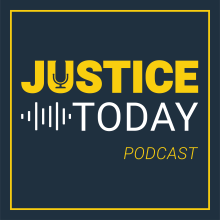Moral-decency crimes
Losing Sleep and Losing Control: The Impact of Subjective and Objective Sleep on the Problem Behavior and Mental Health of Justice-Involved Young Adults
2023 NIJ Research Conference Opening Ceremony
The theme of NIJ’s 2023 Research Conference was “evidence to action,” and our goal was to bring researchers and practitioners together to learn about the latest research evidence and how it can be implemented to promote safety, equity, and justice.
The opening ceremony included remarks from U.S. Attorney General Merrick B. Garland, Assistant Attorney General for the Office of Justice Programs Amy Solomon, and NIJ Director Nancy La Vigne.
See the YouTube Terms of Service and Google Privacy Policy
Progressing from Evidence to Action
Gender-Based Violence and the Latinx Community
See the YouTube Terms of Service and Google Privacy Policy
CrimeStat Regression Module (CrimeStat IV: A Spatial Statistics Program for the Analysis of Crime Incident Locations, Version 4.0)
Spatial Regression Modeling (CrimeStat IV: A Spatial Statistics Program for the Analysis of Crime Incident Locations, Version 4.0)
Multi-Component Efforts to Improve School Safety - Breakout Session, NIJ Virtual Conference on School Safety
On February 16-18, 2021, the National Institute of Justice hosted the Virtual Conference on School Safety: Bridging Research to Practice to Safeguard Our Schools. This video includes the following presentations:
See the YouTube Terms of Service and Google Privacy Policy
School Safety Considerations for Distinct Student Populations - Breakout Session, NIJ Virtual Conference on School Safety
On February 16-18, 2021, the National Institute of Justice hosted the Virtual Conference on School Safety: Bridging Research to Practice to Safeguard Our Schools. This video includes the following presentations:
See the YouTube Terms of Service and Google Privacy Policy
Dual System Youth: At the Intersection of Child Maltreatment and Delinquency
Across the country, child welfare and juvenile justice systems now recognize that youth involved in both systems (i.e., dual system youth) are a vulnerable population who often go unrecognized because of challenges in information-sharing and cross system collaboration. In light of these challenges, national incidence rates of dual system youth are not known.
See the YouTube Terms of Service and Google Privacy Policy
Effectiveness of Line Operations, Final Report
Civil Protection Order Enforcement
T.K. Logan discusses her study that looked at the impact of civil protective orders for domestic violence victims in five Kentucky jurisdictions. Civil protective orders, sometimes known as restraining orders, may cover various situations, such as ordering an assailant to avoid a victim's home and workplace or forbidding any contact with the victim, including by mail or telephone.
See the YouTube Terms of Service and Google Privacy Policy
How Collaboration Between Researchers and Police Chiefs Can Improve the Quality of Sexual Assault Investigations: A Look at Los Angeles
Panelists discuss the application of research findings from an NIJ-sponsored study of sexual assault attrition to police practice in Los Angeles. There are three main focal points: (1) the mutual benefits of researcher/practitioner partnerships, (2) the implications of variation in police interpretation of UCR guidelines specific to clearing sexual assault (with an emphasis on cases involving nonstrangers), and (3) the content of specialized training that must be required for patrol officers and detectives who respond to and investigate sex crimes.
See the YouTube Terms of Service and Google Privacy Policy
Benefit-Cost Analysis for Crime Policy
How do we decide how to allocate criminal justice resources in a way that minimizes the social harms from both crime and policy efforts to control crime? How, for that matter, do we decide how much to spend on the criminal justice system and crime control generally, versus other pressing needs? These questions are at the heart of benefit-cost analysis.
See the YouTube Terms of Service and Google Privacy Policy
Reforming New Orleans' Criminal Justice System: The Role of Data and Research
With its criminal justice system in disarray following Hurricane Katrina, New Orleans invited the Vera Institute of Justice to examine the city's court and jail operations. For five years, Vera has been tracking arrest-to-first-appearance time, custodial arrests versus summonses, the granting of pretrial release, and many other decision-making points. Based on analysis of these data, Vera is making policy recommendations to assist with the implementation of new procedures and to ensure performance monitoring.
Project on Human Development in Chicago Neighborhoods
Interview with Akiva Liberman, The Urban Institute
Alternative Sentencing Policies for Drug Offenders
The panel presentations from the 2009 NIJ Conference are based on an NIJ-sponsored evaluation of the effectiveness of Kansas Senate Bill 123, which mandates community-based drug abuse treatment for drug possession by nonviolent offenders in lieu of prison.



